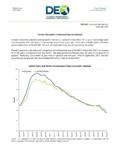Transcription of The Retail Trade Workforce in the United States - …
1 1 The Retail Trade Workforce in the United States Whether we realize or admit to it, most Americans spend a significant amount of time shopping. On average, we spend nearly 45 minutes a day (more than 270 hours per year) purchasing goods and We regularly put gasoline into our cars, and buy groceries, clothing, electronics, household goods, furniture, and much more. We shop through a variety of channels, including shopping malls, the Internet, infomercials, and catalogs. Our immersion in the Retail world means we also spend a lot of time interacting with those who work in the Retail Trade sector.
2 Walk into any store, and you may be met by a greeter supplementing their income in retirement, assisted by a salesperson with a college degree, checked-out at the register by a cashier who is also a single parent, and have your purchases carried to your car by a college student working to pay tuition. In the store, you may also see a manager who has been with the company for years and worked her way up from being a cashier, or you may see someone unloading a truck as his second job. Buy something online, over the phone, or through the mail, and your interactions with the workers in the Retail sector may be invisible, but are nonetheless occurring.
3 Just how many people work in the Retail Trade sector? Who are they, and what wages do they earn? What opportunities do they have? What are the trends indicating towards the future of work in the sector? The answers to these questions are highly significant, given our regular interactions with the Retail world, and the importance of the sector to our economy and in creating job opportunities. Workforce Size and Occupations Nearly million people were employed in Retail Trade in 2011 about 10 percent of the US labor Cashiers and Retail salespeople were the most common occupations in the entire economy in 2011, employing million and million people, respectively, and 1 American Time Use Survey.
4 (2010). bureau of labor statistics . Retrieved on June 5th, 2011, from the bureau of labor statistics , available at 2 bureau of labor and statistics , Occupational Employment statistics , 2012 2 representing nearly 6 percent of total Wal-Mart, the sector s largest employer, employs nearly 10 percent of Retail workers, or approximately 1 percent of the nation s Workforce Demographics and Education Levels The Retail industry s demographic makeup is similar to that of the Workforce as a whole, with Retail employing a slightly younger population of workers.
5 Retail workers had a median age of 38 in 2011, compared to a median age of 42 in all workers, with 23 percent of Retail workers between the ages of 16 and 24, 39 percent between 25 and 44, 33 percent between 45 and 64, and 5 percent over Women and men are nearly equally represented in the Retail sector, with women slightly more represented in Retail than in the Workforce as a whole. In 2011, almost 11 percent of workers in Retail were African-American, 5 percent were Asian, and 15 percent were However, both women and minorities are underrepresented in higher-paying Retail management positions, with women also overrepresented in lower paying front-line Educational requirements for positions such as cashiers and salespeople are usually non-specific, although employers may generally prefer those with a high school diploma.
6 And management positions may require a college The number of Retail workers with a college education is increasing, and there is a significant return on education in the industry, as those with a bachelor s degree have incomes far exceeding those with high school diplomas or Of Retail workers over the age of 25 in 2010, 12 percent had less than a high school education, 38 percent were high school graduates without college experience, 20 percent had attended at least some college, and 30 percent had an associate s degree or Retail Sector Wages, Hours Worked, and Scheduling In 2011, the national median hourly wage in the Retail sector was $ , compared to the national median of $ for all workers.
7 However, the median wage for cashiers was $ , and $ for Retail salespeople, the two largest occupations in Retail . Assuming a worker is 3 bureau of labor and statistics , Occupational Employment and Wages 2011, 2012. 4 Gibson, E. (2011). Retail sector adding jobs, but not always careers. Associated Press. Retrieved from the Seattle Times on May 24th 2011, available at 5 bureau of labor and statistics , Current Population Survey, 2012. 6 bureau of labor and statistics , Current Population Survey, 2012. 7 Carre, F.
8 & Tilly, C. (2008). America s biggest low wage industry: Continuity and change in Retail jobs. Center for Social Policy Publications. Paper 22. Retrieved on July 17th, 2012 from 8 bureau of labor and statistics , Occupational Outlook Handbook, 2012-2013 Edition, 2012. 9 Shaw, K. (2011). The spread of good jobs for the less skilled: Modern Retail as the new manufacturing. Presentation to the The Federal Reserve Bank of San Francisco. Retrieved on July 17th, 2012 from 10 bureau of labor and statistics , Current Population Survey, 2011. Retrieved from the National Retail Federation at 3 employed full-time, these wages equate to annual earnings of $20,230 for cashiers and $25,130 for Retail bureau of labor and statistics , Occupational Employment statistics , 2011.
9 Many Retail workers are employed part-time. In 2010, nearly a third of Retail salespersons and almost half of cashiers worked part-time. Data shows that many of these workers are involuntarily part-time, meaning they would like to be working full-time, but are not offered full-time Research also shows that part-time workers are provided with less training and fewer opportunities for promotion than full-time Variable schedules and hours often characterize Retail jobs, and workers must often work nights, weekends, and holidays. A study by the Retail Action Project and the City University of New York s Murphy Institute surveying workers in the Retail industry in New York found that only 17 percent of workers had a set schedule, and only 30 percent reported knowing their work schedule at least one week in advance.
10 14 Retail Worker Benefits Little information exists about the number or percentage of workers in the sector receiving benefits. However, we would expect this would be similar to other industries, with those 11 bureau of labor and statistics , Occupational Employment statistics , 2012. 12 bureau of labor and statistics , Occupational Outlook Handbook, 2012-2013 Edition, 2012., 13 Carre, F., Holgate, B., & Tilly, C. (2010). Competitive strategies and worker outcomes in the US Retail industry: Consequences for jobs in food and consumer electronics stores, Center for Social Policy Working Paper 2010-01, Accessed from: Fujita, N.






